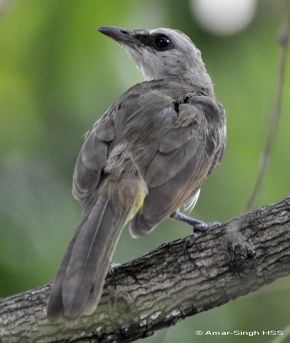“We are not happy with this latest Yellow-vented Bulbul (Pycnonotus goiavier analis) sub-adult in our garden. Of the latest brood of Yellow-vented Bulbuls, this ‘young’ has yet to leave. We have observed that the bird is still begging for food despite the parent’s reluctance to feed it. There have been a number of altercations with the adult parents, possibly attempts to tell it to leave.
“As clinicians, both my wife and I are unhappy with the quality of its plumage. Although it looks reasonably adult the plumage looks unhealthy. Grooming is also poor.
“We have previously seen a similar situation some years back and that young also had microcephaly (smaller head than normal). That young was not able to fend for itself and was eventually chased off by the adult parents.
“We think this may be due to environmental toxins. We do not use any chemicals in our garden but that cannot be said of our neighbours or our city at large.
“Appreciate any responses or opinions.”
Dato’ Dr Amar-Singh HSS
Canning Garden Home, Ipoh City, Perak, Malaysia
3rd March 2010










One Response
Like yourself, I have seen an odd fledgeling in last years batch. It was way too large to be begging for food. I have seen much smaller birds already trying to catch their own food and groom themselves.
This one kept following the parents. You could see from the way it flew, that it was as good as its parents in flight ability.
We also encounter similar genetic disorders in our own species leading to sub-normal mental capacities in some individuals which make then incapable looking after themselves. I am not sure if much has been done in this field in birds, but I am sure it is possible that it occurs among the avians.
Nature’s rule of survival of the fittest seems to ensure that such individuals have little chance of passing its genes to the next generation.